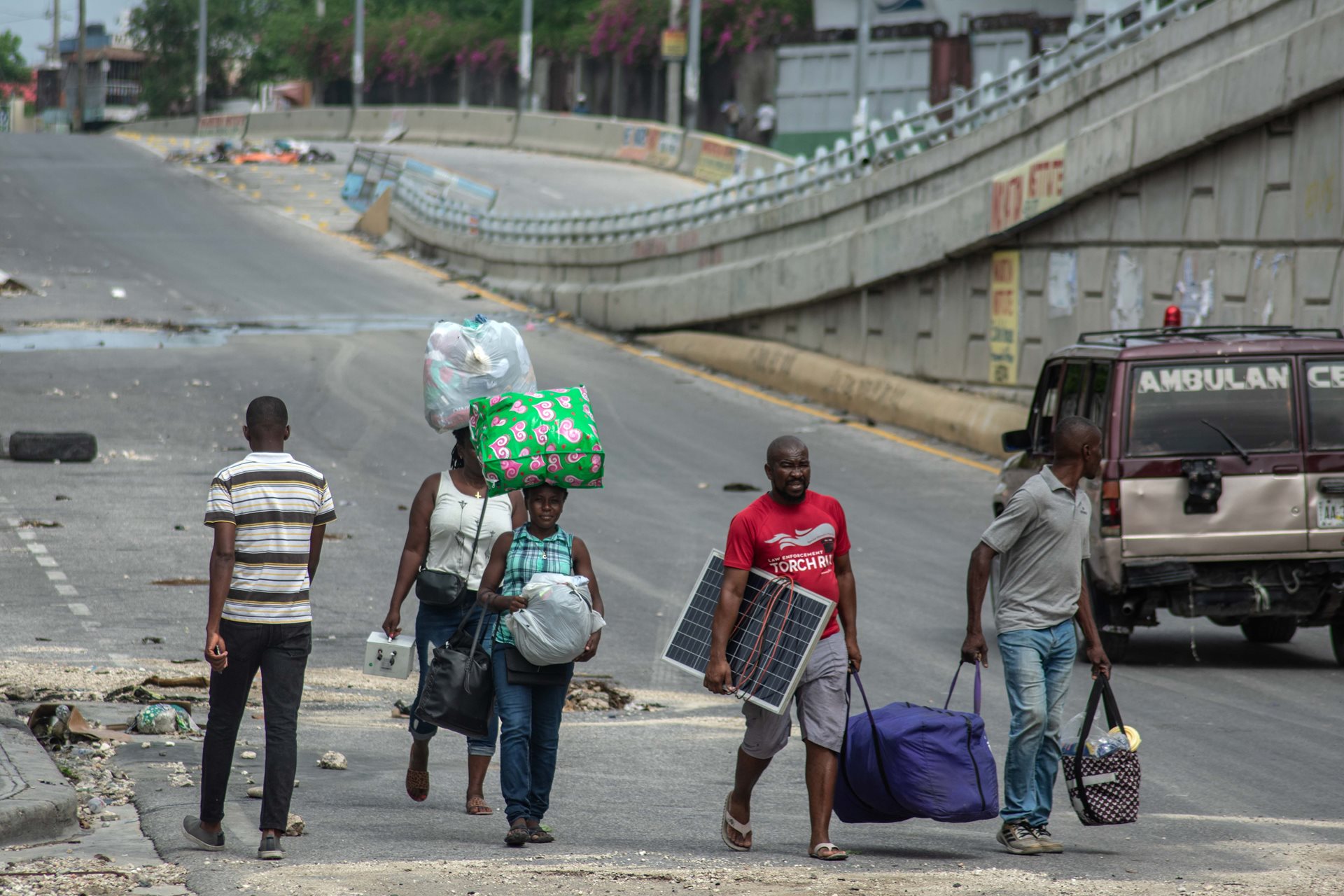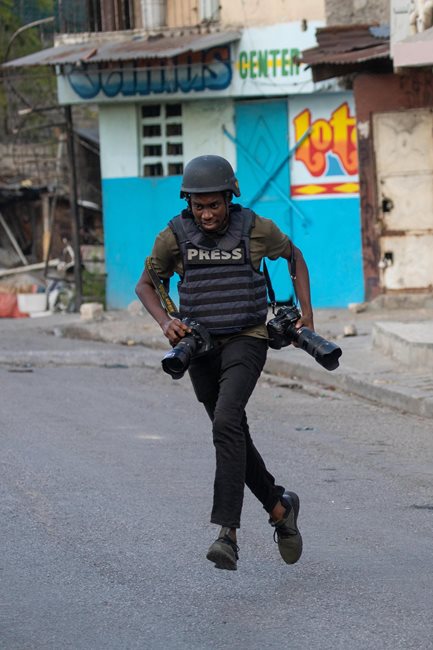Residents flee gang violence in their neighborhood in Port-au-Prince, Haiti. According to the United Nations, thousands of Port-au-Prince residents have been killed and more than a million displaced in 2024.
Haiti is suffering from an unprecedented surge in gang violence. Plagued by political instability and lacking a legitimate leader, Haiti has had three prime ministers in the past year. Gangs have taken over large territories and have been responsible for the death of thousands and the internal displacement of many more. Since President Moïse was assassinated in 2021, armed gangs have proliferated and violence has intensified. Around 300 criminal groups are active in the country, controlling a territory inhabited by 2.7 million Haitians. Gang violence, reaching levels comparable to war zones, includes killings, disappearances, torture, arson, and systematic sexual violence, notably against women and children.
This crisis is deeply rooted in Haiti’s colonial past, slavery, and the crippling independence debt imposed by France, which fueled long-term inequalities. For months in 2024, the main airport was closed, neighborhoods were burned, and civilians were killed. To fill the power vacuum, the United States and Caribbean countries helped Haiti implement a nine-member transitional presidential council to rule the country. Eventually, former UN official Garry Conille was named interim prime minister, but the country’s ruling council fired him in November following a political power struggle that unfolded amid yet another wave of kidnappings and killings. Haiti’s transitional council named Alix Didier Fils-Aimé, the owner of a chain of dry cleaners and a former candidate for the Haitian Senate, as his replacement, but the violence continues.
Lacking financial resources and institutional support, journalists in Haiti are often targeted by gangs and subject to threats, kidnappings, and murders. This project, photographed by a resident of Port-au-Prince, captures the human elements behind the statistics of the ongoing crisis.
Are you a photographer and/or passionate about press freedom? Sign up for our newsletter to stay updated on our annual contest and to hear about exhibitions near you.

